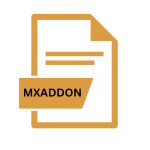.VST File Extension

VST Audio Plug-in
| Developer | Steinberg |
| Popularity | |
| Category | Plugin Files |
| Format | .VST |
| Cross Platform | Update Soon |
What is an VST file?
.VST files are associated with VST (Virtual Studio Technology), an audio plug-in interface developed by Steinberg for integrating software audio effects and instruments into digital audio workstations (DAWs) and other audio editing software.
These files serve as audio plug-ins that extend the functionality of audio software by providing additional effects, instruments, or processing capabilities.
More Information.
Steinberg’s VST technology was initially developed to address the limitations of hardware-based audio processing and to provide a more flexible and versatile solution for audio production.
The introduction of .VST plug-ins allowed users to access a wide range of high-quality audio effects, instruments, and processing tools directly within their favorite DAWs, significantly expanding the creative possibilities and workflows in music production, sound design, and audio engineering.
Origin Of This File.
The .VST file format was introduced by Steinberg in the late 1990s as part of its VST technology, aimed at revolutionizing the way audio effects and instruments are integrated into digital audio workstations.
This standardized format allowed third-party developers to create and distribute VST plug-ins, fostering a vibrant ecosystem of audio software and plug-ins.
File Structure Technical Specification.
.VST files are typically distributed as binary files containing compiled code and resources required to implement the audio plug-in’s functionality.
While the exact structure and contents of .VST files may vary depending on the plug-in’s complexity and features, common components include:
- Executable Code: Binary code containing the plug-in’s audio processing algorithms, user interface elements, and other functionality.
- Resources: Audio samples, presets, graphics, and other assets used by the plug-in for its user interface, sound generation, or processing tasks.
- Metadata: Information about the plug-in, such as its name, version, author, description, and compatibility with different DAWs and operating systems.
How to Convert the File?
Converting .VST files are generally not necessary, as they are specifically designed for use with audio software that supports the VST plug-in interface.
Users may need to install or update .VST plug-ins to ensure compatibility with their DAWs or operating systems. Conversion methods can vary depending on the specific requirements and tools available. Common approaches include:
- Installation: Download and install .VST plug-ins from reputable sources or authorized distributors, following the installation instructions provided by the plug-in manufacturer.
- Update: Check for updates or newer versions of .VST plug-ins to ensure compatibility with the latest versions of your DAW and operating system, and follow the update instructions provided by the plug-in manufacturer.
Advantages And Disadvantages.
Advantages:
- Versatility: .VST plug-ins can provide a wide range of audio effects, instruments, and processing tools, catering to various needs and preferences in music production and audio engineering.
- Interoperability: VST is a widely adopted standard supported by most major DAWs and audio editing software, ensuring compatibility and seamless integration across different platforms and environments.
- Expandability: The availability of third-party .VST plug-ins allow users to expand and customize their audio software with new features and capabilities, enhancing creativity and productivity in audio production.
Disadvantages:
- Compatibility Issues: Some .VST plug-ins may not be fully compatible with certain DAWs or operating systems, leading to potential issues or limitations in functionality.
- Resource Intensiveness: Certain .VST plug-ins may consume significant CPU and memory resources, particularly if they implement complex audio processing algorithms or high-quality sound generation techniques.
- Quality Control: Not all .VST plug-ins may be of the same quality or reliability, and users should exercise caution when downloading and installing plug-ins from untrusted sources to avoid potential stability or security risks.
How to Open VST?
Open In Windows
- Download and install a digital audio workstation (DAW) or audio editing software that supports VST plug-ins, such as Ableton Live, FL Studio, or Reaper.
- Launch the DAW or audio software and navigate to the plug-in management or preferences menu.
- Scan for VST plug-ins and select the location where your .VST files are located to add them to the plug-in library.
- The .VST plug-ins will now be available for use within your DAW or audio software.
Open In Linux
- Many Linux audio software applications, such as Ardour, Audacity, or Carla, support VST plug-ins through compatibility layers like Wine or LinVst.
- Install Wine or LinVst on your Linux system and configure it to support VST plug-ins.
- Follow the same steps as in Windows to add .VST plug-ins to your Linux audio software.
Open In MAC
- macOS supports VST plug-ins natively in some audio software applications like Logic Pro X or GarageBand.
- Follow the same steps as in Windows to add .VST plug-ins to your macOS audio software.













